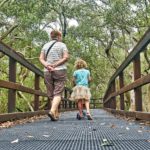Spinal Stenosis is a condition where the tube carrying the spinal cord becomes narrowed. This narrowing may happen with aging but can occur in middle age as well. Individuals with this condition may experience back pain, leg pain, or nothing at all.
What determines who is going to experience what? This is difficult to answer as many factors are involved. To begin with, what is the degree of narrowing? Meaning how much room does the spinal cord have to move freely. Also involved are hip and spine mobility, overall activity level, and unknown factors. These unknown  factors are things medicine cannot quantify or give a name to, but influence how people experience the condition.
factors are things medicine cannot quantify or give a name to, but influence how people experience the condition.
The most common complaint(s) individuals with stenosis report include: increased pain, numbness/tingling, or heaviness when they are active (walking). Often these individuals will report complete or mostly complete reduction of symptoms (FAST) upon sitting. This response frequently leads these individuals to be less active as they “hurt” less when sitting. What then happens as a result of increased sitting is more stiffness, less mobility of hips/spine, weakness of muscles and reduced endurance. It becomes a vicious cycle.
Why does sitting feel better for these folks? Well, sitting creates greater room for the spinal cord and thus less pressure on the system. The opposite effect happens in standing or walking. So how then is walking good? To begin with, walking will help reduce stiffness in the body. Stiffness is a major factor in how the body feels. Walking will also help one maintain muscle endurance, promoting blood flow to working muscles. Plus, walking benefits the cardiovascular system, not to mention overall health.
In the past, the best recognized treatment for spinal stenosis were flexion exercises. Stretches and movements designed to open space in the spine to ease symptoms. This works well in the short term but often does not help overall mobility. The other known treatment was surgery. What was discovered in a 10 year study was people with or without surgery experienced the same results in terms of daily function.
Today- the best way to treat spinal stenosis is actively. Stretching and being stretched to increase mobility of the spine and hips. Strengthening for the whole body, but especially the legs. And cycling, swimming, or walking for endurance. Overall, working to keep your body moving and healthy. Taking steps earlier in life to address small issues before they become bigger. And not letting some doctor tell you there is nothing that can be done based on some x-ray or MRI.
You can be active again or in spite of spinal stenosis. You just need to take that 1st step of moving.
Looking for more answers to defeat back pain or spinal stenosis? If so, click HERE for more information.
